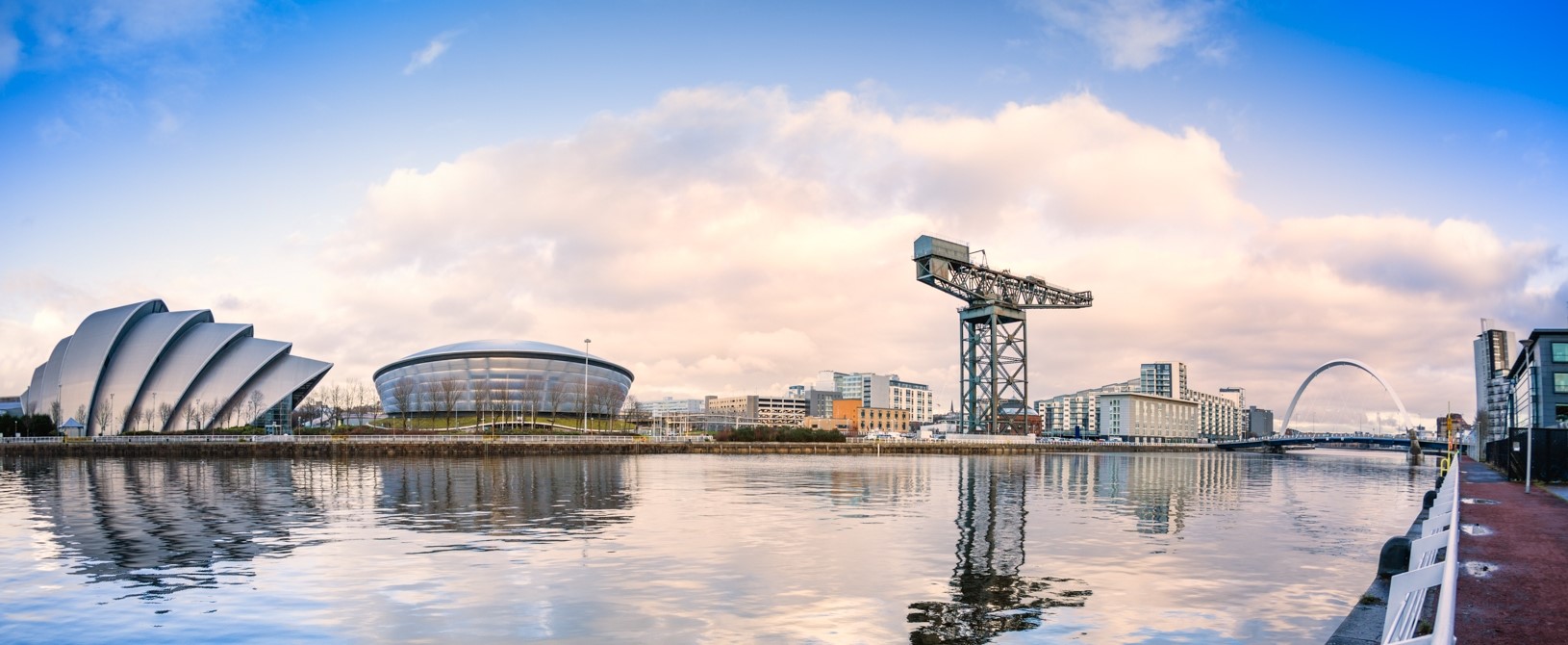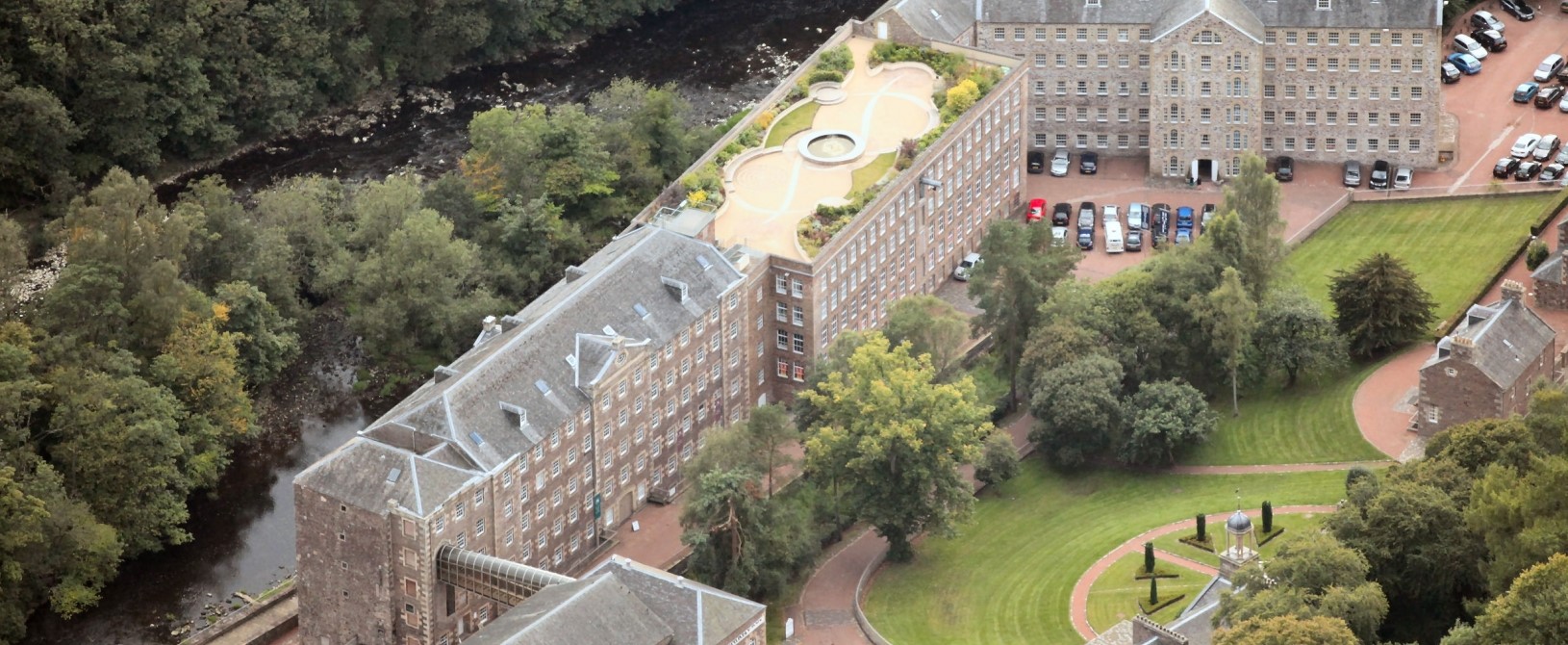Issue 35, Autumn 2011

Before moving to Scotland in 1968 I knew little of Glasgow. Preconceptions had been influenced by reading the book 'No Mean City' that starkly described life in the overcrowded run-down slums of the Gorbals during its period of industrial decline.
The book had been a sensation in its time and had created an unfortunate image of Scotland's largest city in the minds of many who lived south of the border. Unfairly perhaps, as Glasgow has had an impressive history. Its university was established in the 15th century and, by the Victorian era, it was known as the Second City of the British Empire. It was one of the worlds pre-eminent centres of heavy engineering, but by the middle of the 20th century, a lack of investment and the effects of overseas competition had resulted in the closure of shipyards, which in turn had led to mass unemployment and extensive deprivation.
By the time I arrived in Scotland however, a programme of urban regeneration was well underway and in the subsequent 40 years I have seen Glasgow transformed into a centre of cultural and artistic excellence and a worthy rival to Edinburgh as a tourist destination.
Its latest attraction is the Riverside Museum opened just a few months ago. This acclaimed building has a theme of transport and travel and replaces the popular Museum of Transport that for many years has been located at the Kelvin Hall. We have been arranging excursions to Glasgow for some time, but in 2012 we will be including a visit to this splendid new attraction in many of the Inversnaid Hotel itineraries.
At about the same time that the Riverside Museum opened another Glasgow project was finally completed - the long anticipated M74 extension. This new motorway, which follows a line south of the city, is welcome news, as it will reduce the driving time from England to our hotels at Arrochar, Loch Awe and Fort William. Although dogged in controversy in its planning stages, remarkably the project was completed eight months ahead of schedule - a rare occurrence indeed.
As my son Ian prepares to take on new responsibilities at Ardgartan it was time for him and his family to leave the Loch Tummel Hotel where he has been director and general manager for several years. Their departure was a sad occasion for the entire Wells family, as his loch-side house near the hotel has been the perfect venue for regular family get-togethers. Fortunately though, we did manage to arrange one last weekend, blessed with perfect weather, just before the move was made.
Michael Wells - Chairman
Ardgartan Hotel on Course

Construction of our new hotel at Ardgartan continues on schedule - well more or less. An extended spell of wet weather held up some of the exterior work, but now that sections of the building are fully wind and watertight, electricians, plumbers, joiners and plasterers have all been able to move in and significantly accelerate progress.
Accordingly we have commenced taking bookings for the autumn of 2012, although if work continues to go to plan, it is just possible that we may be able to open a few weeks earlier. But the final decision must wait awhile as, from past experience, we know that there are bound to be some un-anticipated complications during the latter stages of the project.
Whilst my son Neil supervises construction of the hotel, research into the history of the site has continued and its connection with a diplomatic dilemma at a momentous time in history has emerged.
Ardgartan House, which once occupied a site just behind our new hotel, had been acquired by the Scottish Youth Hostel Association in 1936, and its immediate success resulted in it being chosen as the venue for an International Youth Hostel Rally and Conference to be held at the end of August, 1939.
Hundreds of young Hostellers were invited from countries throughout Europe and America. It was to be one of the biggest youth rallies ever staged in Scotland. An army of doctors, nurses, ambulance men, interpreters, hill guides, and camp wardens were enlisted to facilitate the smooth functioning of this great gathering of youth.
Following the fraternal greetings from delegates, the evening was planned to be spent in an open-air jamboree terminating with a huge camp fire singsong. However the timing for the event could not have been worse. Tension throughout Europe was rising rapidly and, after much debate, at the last minute it was decided to cancel the conference, and proceed with just the social side of the rally.
In the event it all passed off remarkably well. An international group of approximately 1,200 spent the night at Ardgartan, most of them in an extensive tent town, stretching along the banks of Loch Long. An impromptu concert was arranged with individuals from different countries singing and playing their folk songs and performing their national dances. It was an unforgettable, joyous occasion, but soon the delegates were packing up to return to their own countries and, just a few days later on 1st September, 1939 war was declared.
It is both sad and ironic to think that so many of those young men celebrating together would soon be fighting each other as bitter enemies.
New Lanark

The first cotton mills were built during the Industrial Revolution in the late 18th century and they enabled the mechanisation of the spinning process.
They were not healthy places to work. The air in the mill had to be hot and humid to prevent the thread from breaking which in turn led to skin and eye infections, bronchitis and tuberculosis. The noise levels in the weaving shops caused deafness in many who worked there. Mill workers, many of them children, were expected to work a thirteen hour day, six days a week with just two weeks off a year. In short, a fairly grim existence.
By contrast, in 1785 the cotton mills at New Lanark were founded under the enlightened management of Robert Owen, whose ideas were at least a hundred years ahead of their time. Child labour and corporal punishment were abolished, and villagers were provided with decent homes, schools and evening classes, free health care, and affordable food.
New Lanark became celebrated throughout Europe, with many leading royals, statesmen and reformers visiting the mills. They were astonished to find a clean, healthy industrial environment with a content, vibrant workforce and a prosperous, viable business venture all rolled into one. Owen's philosophy was contrary to contemporary thinking, but he was able to demonstrate that it was not necessary for an industrial enterprise to treat its workers badly to be profitable.
The mills continued to operate until 1968, by which time many of the building had become dilapidated and people had started to move away from the village.
In 1974 the New Lanark Conservation Trust was formed as an independent charity dedicated to the restoration and revitalisation of the village.
It was a huge undertaking, but in 2001 it was designated as a World Heritage site by UNESCO, with most of the buildings having been restored and the village now a major tourist attraction with over 400,000 visitors a year.
Lochs and Glens are pleased to announce that they will be including a visit to this fascinating attraction in many Loch Achray Hotel itineraries in 2012.